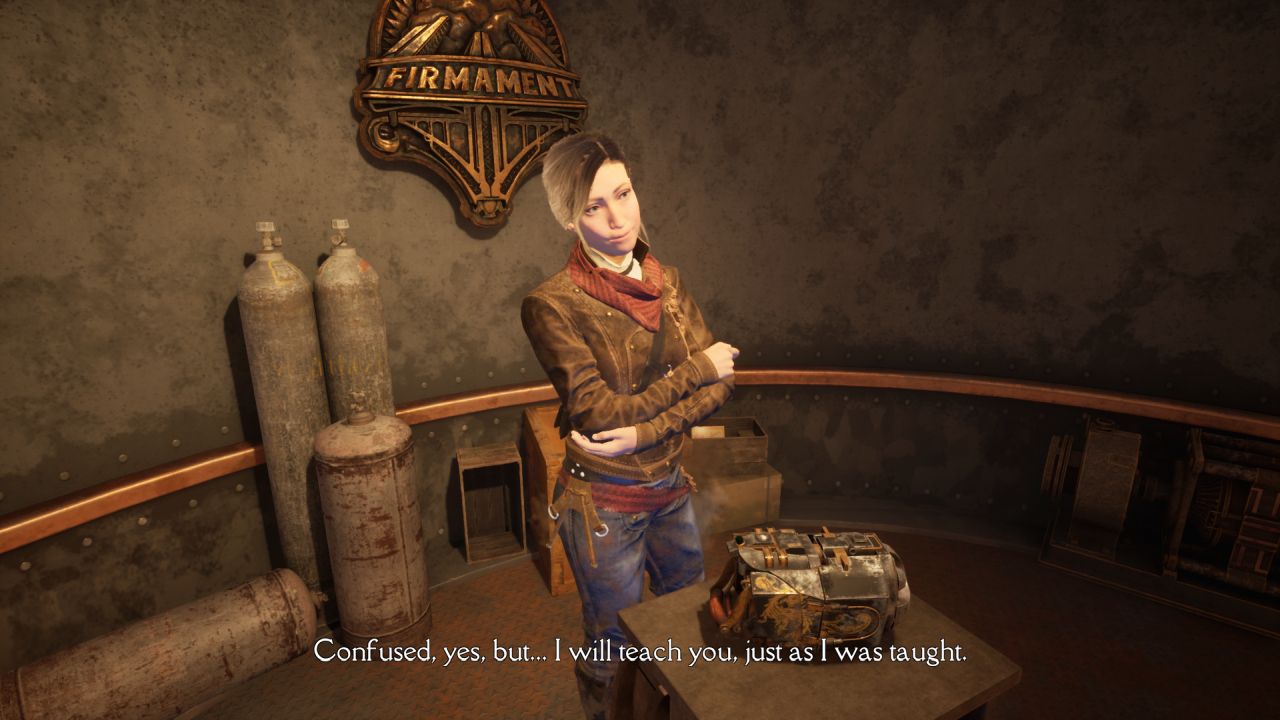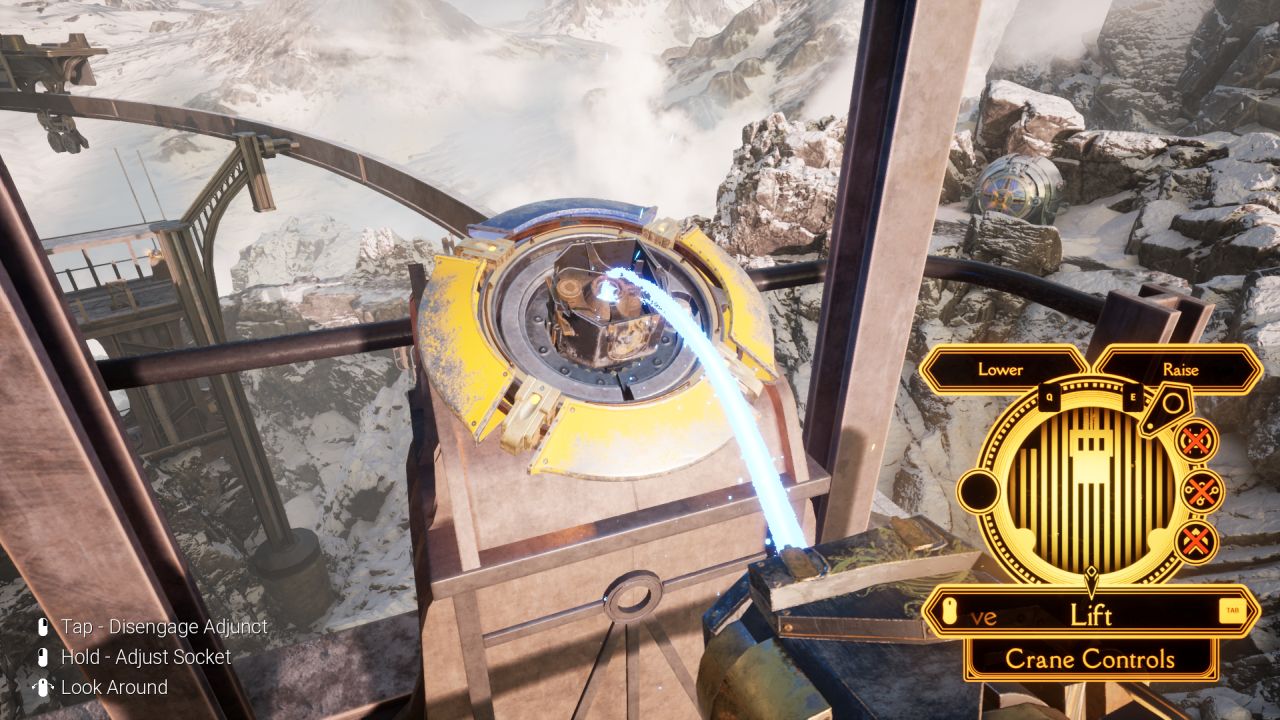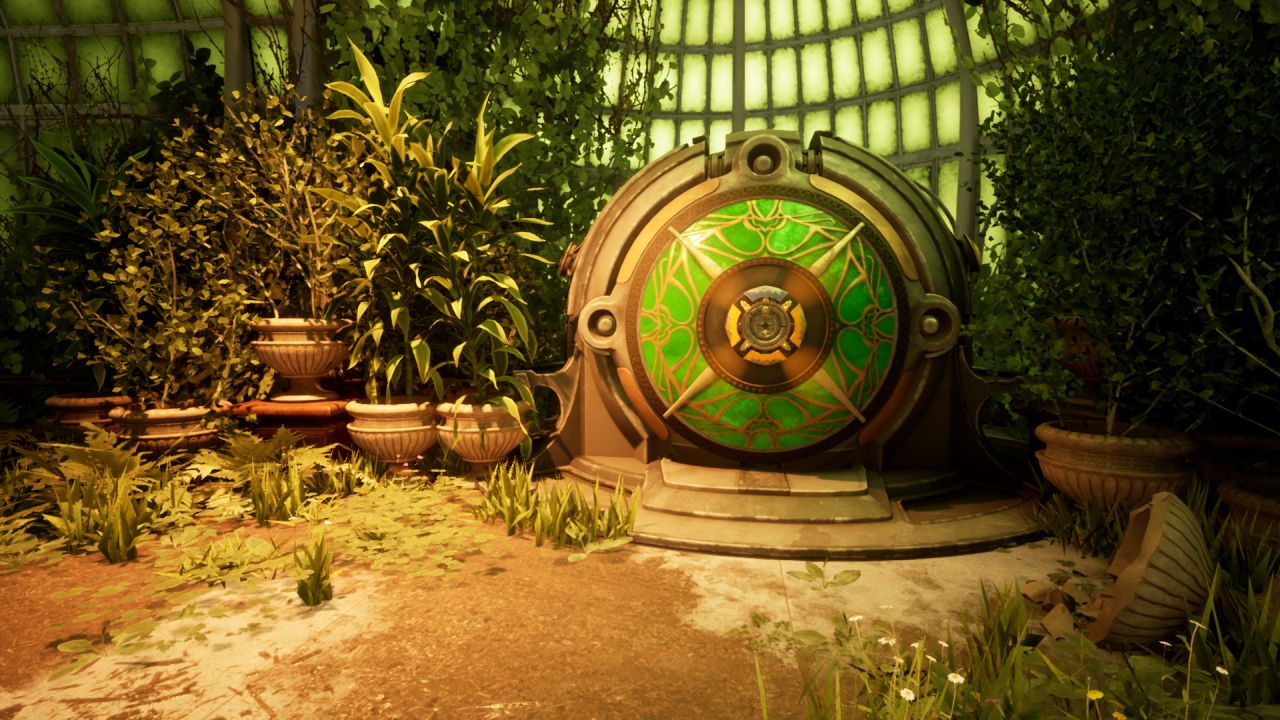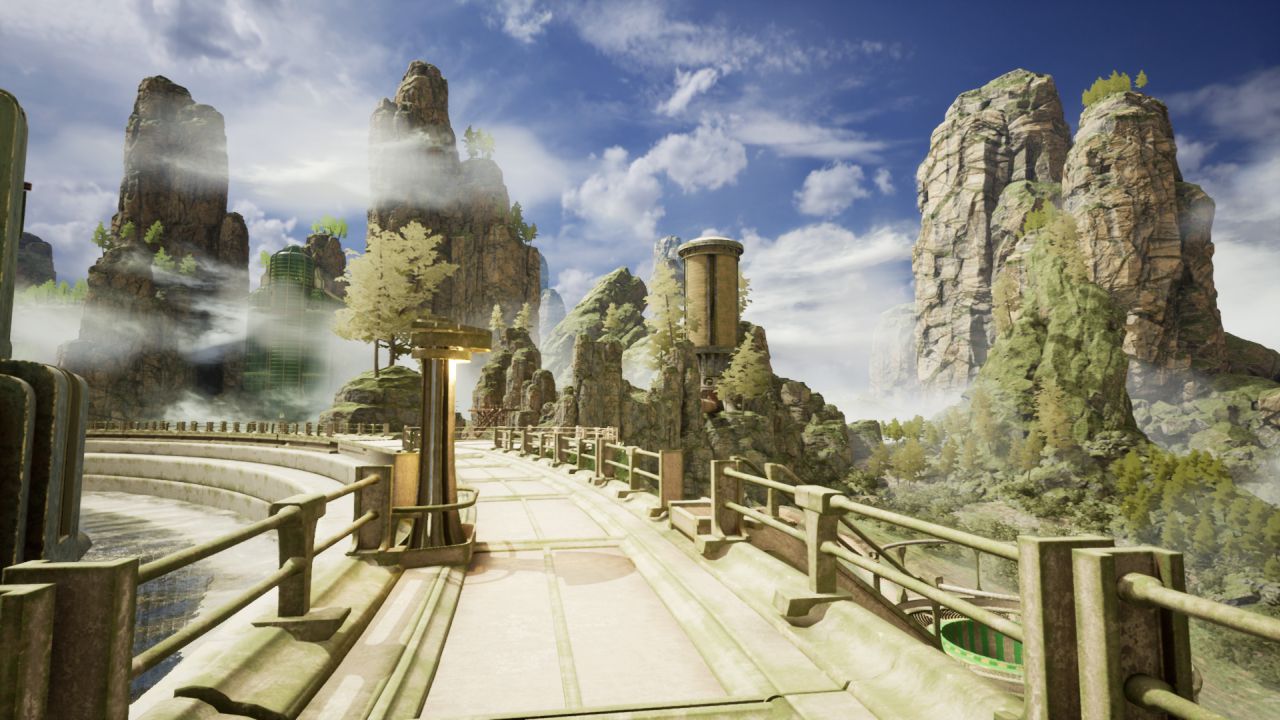Firmament Review
Myst the mark
Some gamers might not realize how big Myst was when it released in 1993. The puzzle-adventure game sold millions of copies during the 90s, rivaling the commercial success of the original Doom. Aside from increasing the adoption rate of CD-ROM drives, it was praised by critics and led to many sequels. The original development team, Cyan, released a modern remake of it a few years ago, and it plays great despite the puzzles being three decades old. It is no surprise that Cyan want to capture that magic again. In 2016 they tried and partially succeeded with Obduction, a decent first-person puzzle adventure game that had players swapping spherical portions of the landscape across colorful worlds. Firmament is their latest effort, once again letting players jump between worlds to solve puzzles by fiddling with contraptions. Unfortunately, it is best described as Obduction without the interesting parts. Filled with clumsy mechanics and sparse interaction, Firmament is disappointing.

Firmament begins in cryptic fashion. You wake up from a pod and are introduced to an unnamed woman who appears to be a ghost. She claims to be dead but isn’t concerned about her current state of being. Instead, she needs your help to “awaken the embrace.” What this means is a complete mystery for most of the game. In simple terms, you have to raise huge control spires in three realms and enter them, but this usually takes a few steps.
The ghostly woman comes along for the ride, as your mentor, but she barely talks. Listening to what she says is the equivalent of reading the back of a cereal box written in an alien language. She occasionally drops names of unknown characters and mentions how you and them are called Keepers. Apparently Keepers were tasked to maintain the three worlds. They were provided with everything until there was a problem, but further details are redacted. Until the end, when she tells you everything all at once, to reveal why next-to-nothing could be explained earlier. But even this doesn’t make sense and so, for most of the game, you will wish she haunted somebody else. Given her allergy to clarity, it is not surprising that she does not explain the only tool you use to solve every single puzzle.
The Adjunct tool is a hand-held remote-control gauntlet with a short tether that connects to devices via a socket. It is used for everything, from merely opening doors to turning on machinery. It has three upgrades: one increases the tether range, another allows for multiple connections, and the third just twists sockets harder since nobody sprayed them with WD-40. These upgrades are found a moderate distance into each realm, used to gate progress and encourage world-hopping. Most sockets are basically just switches, although some have multiple functions (like open/close, rotate, raise etc.) that you cycle through with the mouse-wheel. Since you need to be in the right place to connect, there is a bit of jostling involved.

One key feature of the Adjunct is that it allows players to connect to devices and freely look elsewhere. So you can stand on a train cart, driving it forward and backward with the Adjunct’s operation keys, without needing to stare at controls. This can help to place puzzle objects in their right position, but it often doesn’t matter due to discrete movements or obstructions. Also, the tether regularly disconnects. If you get out of range or look in the wrong direction, it will retract. Sometimes it drops for no good reason or fails to connect despite the indicator icon appearing valid. Since it takes a second to reconnect, the concept of ordinary switches starts sounding better and better. The other characteristic of the Adjunct is that having sockets helps to highlight all interactive spots, which is important given the realms are big and empty.
The three realms in Firmament are incredibly boring to explore. They look fine, but are derivative and simple. One realm is a lush mountain world with an overgrown conservatory. Another features icy mountains and frozen lakes. And the third consists of sulfur mountains with acid pools. While some corners show signs of previous occupancy, they do not aid the storytelling because there is too little detail. Mountains, bunkers, and generic industrial buildings dominate most of what you see, with narrow rock paths and tiny ledges you cannot pass since there is no jump ability. One reason the worlds are so barren is because the distance between interactive spots is huge. Imagine a 2D point and click adventure game, but instead of having something to do on every screen, you have to navigate through five screens just to open a door. Firmament goes for scale, maybe to deceive players into believing there will be an overwhelming number of tasks. Maybe to show off its grand vistas and imposing structures. Whatever the reason, you will be walking through a lot of emptiness.

Fortunately, there are some transport pods that offer a slow form of fast-travel. Each pod can teleport you to any other discovered pod in the same realm, or back to the Keeper’s home base, called the Swan. At the Swan are three pods that teleport to each realm, so to get from one world to another takes two transports. These transports take a while to do their thing, even with the game installed on a SSD, and this time is elongated by the pod’s slow animations to open and engage. Other methods of travel include rail cars; but these can take a minute to transfer players between stations too, highlighting that perhaps these worlds are just unnecessarily large. So no matter how you choose to get from A to B, it is not usually a brisk process to find the next unsolved puzzle.
Puzzles are rarely satisfying to complete. Many sockets could have been replaced by switches to make things easier and quicker. Mechanical devices do not instill wonder or cleverness. Trying to work out what machines do can be interesting at first, since a few are unintuitive in conjunction with the Adjunct’s connectivity quirks. One of the best puzzles involved rotating conductive pontoons on an acid lake to create a battery, by matching the exact voltage. But for every good puzzle there are many clunky or disappointing ones. On the frozen planet, you need to enter a diving suit to turn on steam pipes to melt ice. The number of pipes is ridiculous and trying to find the next one is unpleasant busywork. Far too much of the puzzling is like this, tedious, made worse because of long travel times or slow machine animations.
Disappointingly, a few machines broke during their use. Moving parts traveled beyond their intended limits. The biggest problem came with the largest machine; a huge crane with a retractable winch, used for picking up gigantic ice blocks, got stuck on a rock wall and would not move. Using an obscure menu option to “teleport to a safe area” fixed the crane’s game-breaking position but resulted in time lost having to repeat actions, and even then it was a pain to use. Another winch got stuck deep inside the landscape and would only move slowly, taking forever to complete a basic task. Since there are not that many machines across these vacant worlds, it is actually surprising how many are either clunky or broken.

Firmament is a disappointing first-person puzzle game from the team that gave us Obduction. While it tries to bring some narrative content via a companion ghost, it fails monumentally with cryptic delivery and terrible exposition. Players interact with puzzles using a remote-control tether, called the Adjunct, and although it works okay, it can be clumsy and annoying. The eight-hour adventure consists of long walks between sparse interactive points across three bland realms. While there are a few okay puzzles here and there, most are not satisfying to solve. A few even broke, resulting in lots of time wasted. As much as Firmament looks like a spiritual successor to Myst, it doesn’t come close.
 Comments
Comments












